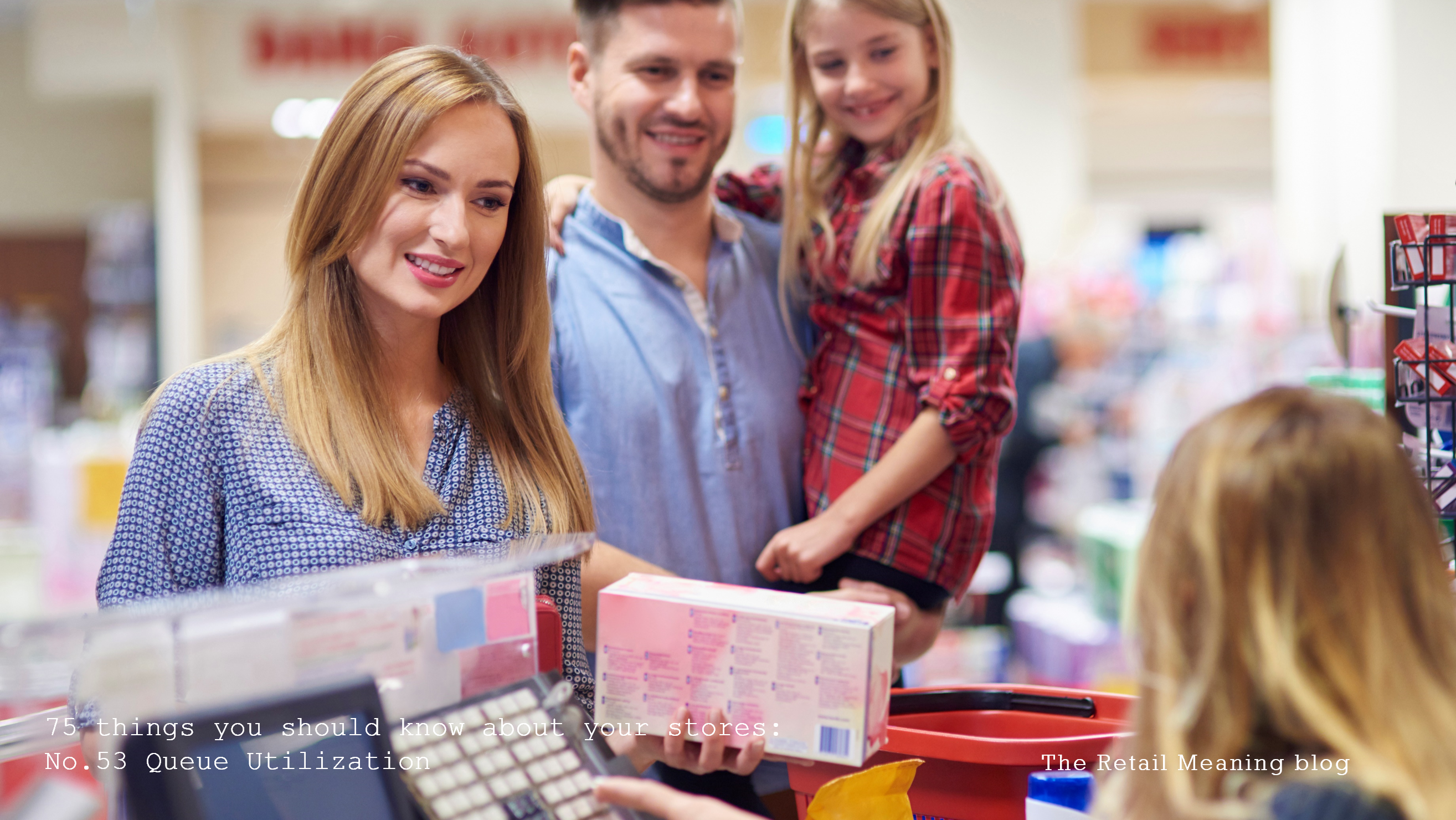The capacity exists to understand every detail of your stores, the way that customers move around them, are attracted to assortment displays, are tempted into touching product and are compelled to convert their engagement into sales.
An incredible journey is just beginning!
No.53. “Queue Utilization”
In physical stores the queuing process related to tills and in deed changing rooms, returns and any other services has often been both a blessing and a curse, an opportunity to impress but all too often a mechanism to distress.
Queue Utilization in its simplest metric is the balance of active time and idle time for queuing systems.
The holy grail for all retailers is to find the “sweet-spot” of maximising sales whilst minimising the cost and time of manning tills and processing orders.
A number of explorations need to be taken into account and measured in order to attain this elusive state.
A logical starting point is the number and placement of tills. Clearly retail stores want to have till areas and service areas that consolidate to maximise the active time and make the idle time a minimum.
Easier said than done when this consolidation may create a journey to purchase that has many abandonments on the way because of the confusion and inconvenience of finding a till outweighs the necessity to purchase or access the service.
We need to measure store and departmental traffic related to active and idle till patterns to establish the correct number of queues and their location.
Conversion of dwell and touch to conversion of sales at tills is an equally potent tool.
The active queue itself can open up many mysteries of the passive purchaser. Simply the amount of time a queue is active fails to tell the story of what is happening, and in deed what is not during that period of time. Is the fundamental queuing process a success or a barrier to achieving the initial purchase as well as stimulating additional purchases.
Queuing is a priority to be explored, tested, measured and analysed to achieve maximum efficiency and sales performance.
- maximise queue utilization through maximum activity
- balance number of tills and queuing spots between customer convenience and store operations
- place till queuing in relation to product locations where queue tolerance is lowest, and away from product categories where queue tolerance is highest
- balance a high till utilization against a high store abandonment
- maximise queue activity
- build in mechanisms which improve the queuing experience and maximise queue tolerance
- raise queue times whilst reducing queue abandonment
- “find your sweet spot” of high utilization, low abandonment, high conversion and additional sales for incremental basket values
Maximise your Queue Utilization by analysing and improving every step of the queuing process
For most retailers the large and obvious improvements to store sales improvements have already been made. There are no big and easy answers!
However our stores are made up of a myriad of individual actions, a myriad of opportunities to improve.
The incremental benefits of many increases can be sizable…10 percent may sound modest, but who wouldn’t want to add that to the bottom line sales?
For information on how to find out more about what is happening in your stores, and how to use this knowledge to increase your sales performance and efficiency, get in touch…
